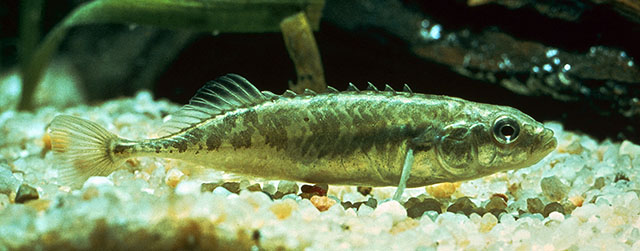| Gasterosteidae (Sticklebacks and tubesnouts) |
| 8 cm SL (male/unsexed) |
|
benthopelagic; freshwater; brackish; marine |
| Euorope: coastal areas of western Europe from Netherlands to the Garonne drainage (France), Ireland and southern Great Britain. |
|
Dorsal spines (total): 9-9. This species is redescribed and is distinguished from congeners by the absence of keel as the only diagnostic character; with lower number of dorsal spines 9 (vs. 10 in P. pungitius); head rounded with a concave snout (specimens longer than 35 mm SL) accentuating the impression of fleshy lips; dorsal spines 8-9; anal soft rays 7-11; scutes on the caudal peduncle 0-4; pectoral-fin rays 10-11. Colouration: body generally bright green with dark tints, covered by blackish blotches, which are absent on the pectoral and abdominal regions (Ref. 125067). |
| Adults inhabit shallow still water with dense vegetation. Feed predominantly on zooplankton, small crustaceans and benthic insects. Spawn for the first time at 1 year of age. Spawning takes place in April-June (Ref. 59043). Males build, guard and aerate the nest where the eggs are deposited (Ref. 205). |
|
Least Concern (LC); Date assessed: 01 January 2008 Ref. (130435)
|
| harmless |
Source and more info: www.fishbase.org. For personal, classroom, and other internal use only. Not for publication.

